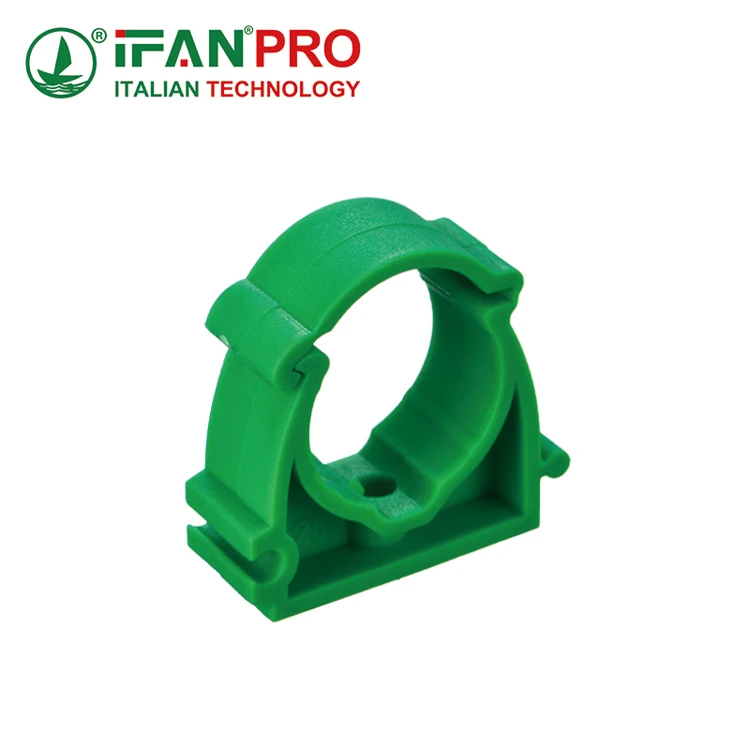PPR pipe fittings and clips are essential components for modern plumbing systems. Finding quality products at competitive prices requires understanding what to look for and where to buy.
What Are PPR Pipe Fittings and Clips?
PPR (Polypropylene Random Copolymer) pipe fittings connect pipe sections seamlessly. These fittings include elbows, tees, reducers, and couplings. Pipe clips secure pipes to walls and structures, preventing movement and reducing noise.
PPR materials offer excellent chemical resistance. They withstand high temperatures up to 95°C. The lightweight design makes installation faster and easier.
Types of PPR Pipe Fittings Available
Socket Fittings
- Equal tees for three-way connections
- Reducing tees for different pipe sizes
- 90-degree elbows for direction changes
- 45-degree elbows for gradual turns
Threaded Fittings
- Male adapters for equipment connections
- Female adapters for valve installations
- Union joints for easy maintenance access
Specialty Fittings
- Ball valves for flow control
- End caps for pipe termination
- Flange adapters for equipment connections
Essential PPR Pipe Clips and Supports
Pipe clips come in various materials and sizes. Plastic clips work well for residential applications. Metal clips provide extra strength for commercial projects.
Single pipe clips hold one pipe securely. Double clips support parallel pipe runs. Insulated clips prevent thermal bridging in heating systems.
Why Choose PPR Over Other Materials?
PPR pipes last longer than traditional materials. They resist corrosion better than metal pipes. Installation costs less due to heat fusion joining.
No chemicals leach into drinking water. PPR maintains water quality over decades. Maintenance requirements stay minimal throughout the pipe’s lifetime.
Energy efficiency improves with PPR systems. Smooth inner surfaces reduce friction losses. Insulation properties help maintain water temperature.
How to Select Quality PPR Fittings
Check Certifications Look for ISO 15874 compliance. Verify NSF certification for drinking water systems. Ensure products meet local building codes.
Inspect Physical Properties Quality fittings feel solid and well-formed. Wall thickness should be uniform throughout. Surface finish appears smooth without imperfections.
Verify Pressure Ratings Standard fittings handle PN20 pressures. High-pressure applications need PN25 ratings. Match fitting pressure to system requirements exactly.

Installation Best Practices
Proper installation ensures long-term performance. Clean pipe ends before joining. Heat fusion requires precise temperature control at 260°C.
Use appropriate tools for each joint type. Socket fusion works for most connections. Electrofusion provides joints in tight spaces.
Allow cooling time between joints. Rushed installation causes weak connections. Test systems before covering pipes permanently.
Cost Factors for PPR Pipe Components
Material quality affects pricing significantly. Premium brands cost more initially but last longer. Generic products may save money upfront but risk early failure.
Order quantities impact unit prices. Bulk purchases reduce per-piece costs. Planning entire projects saves money on shipping.
Custom fittings cost more than standard sizes. Stock items ship faster and cost less. Consider standardizing pipe sizes when possible.
Where to Find Low-Price PPR Fittings
Direct from Manufacturers Factory-direct purchasing eliminates middleman markup. Minimum orders may apply for best pricing. Quality control tends to be more consistent.
Wholesale Distributors Regional distributors stock common sizes. They offer technical support and advice. Delivery times are typically faster than factory direct.
Online Suppliers Compare prices easily across multiple vendors. Read customer reviews before purchasing. Verify return policies for defective products.
Quality vs. Price Considerations
Cheapest options may compromise system reliability. Mid-range products often provide best value. Premium fittings justify costs in critical applications.
Factor installation labor into total costs. Quality fittings install easier and faster. Poor-quality products waste time and materials.
Consider long-term maintenance costs. Reliable components reduce service calls. System downtime costs more than initial savings.
Custom PPR Solutions
Standard fittings don’t fit every application. Custom manufacturing solves unique challenges. Lead times increase for specialized products.
Work with experienced manufacturers for custom needs. They understand application requirements better. Quality control processes ensure consistent results.
Minimum order quantities apply to custom products. Plan orders carefully to avoid excess inventory. Consider standardizing where possible to reduce costs.
Technical Specifications to Consider
Temperature Ratings
- Continuous operation: 70°C
- Peak temperature: 95°C for short periods
- Cold water applications: -10°C minimum
Pressure Classifications
- PN10: 1.0 MPa at 20°C
- PN16: 1.6 MPa at 20°C
- PN20: 2.0 MPa at 20°C
- PN25: 2.5 MPa at 20°C
Chemical Compatibility PPR resists most chemicals found in water systems. Check compatibility for special applications. Industrial chemicals may require different materials.
Common Installation Mistakes to Avoid
Overheating damages fitting integrity. Under-heating creates weak joints. Maintain exact temperatures for reliable connections.
Contamination causes joint failure. Keep pipe ends clean during installation. Store fittings properly before use.
Incorrect pipe preparation wastes materials. Measure twice, cut once applies here. Use proper cutting tools for clean ends.
Mantenimiento y longevidad
PPR systems require minimal maintenance. Annual inspections catch problems early. Check supports and clips for loosening.
Replace worn clips before pipes sag. Sagging creates stress concentrations. Stress leads to premature system failure.
Monitor water quality in drinking water systems. Scale buildup reduces flow capacity. Cleaning may be needed in hard water areas.
Conclusión
PPR pipe fittings and clips offer reliable, cost-effective plumbing solutions. Quality products purchased at competitive prices deliver long-term value. Choose suppliers who understand your specific application needs.
Consider total system costs, not just initial purchase price. Professional installation ensures optimal performance. Regular maintenance extends system life significantly.
Ready to purchase quality PPR fittings at competitive prices? Contact experienced manufacturers who offer custom solutions and technical support for your specific project requirements.













Comentarios recientes